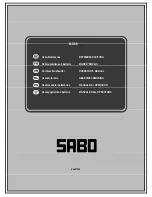
딐
Ӈ
5
OPERATING YOUR TRAIL CUTTER
The operation of any mower can produce foreign objects to be thrown into the eyes, resulting in severe eye
damage. Always wear certified safety glasses or wide-vision safety goggles over spectacles before starting
any cutting machine and while operating such a machine.
The operation of any mower produces sound waves that are damaging to the human ear. Ear protection is
recommended.
CAUTION!
Tragic accidents can occur if the operator is not alert to the presence of children.
Children are often attracted to the machine and the mowing activity.
Never assume that children will
remain where you last saw them.
STOPPING THE ENGINE
•
Make sure the tow vehicle parking brake is set.
•
Disengage cutting blades.
•
Reduce engine to idle speed and allow engine to run momentarily for cooling.
•
Turn the key to the off position.
INTENDED USE
The 44” Trail Cutter is designed to clear dense areas of grass and cut saplings up to 3” thick
on meadows and small estates.
It is not intended to create a finish cut on lawns
. Your
Trail Cutter should be towed behind an ATV, golf cart, lawn tractor or other approved
vehicle. It is not recommended for speeds exceeding 5 MPH.
ATTACHING TRAIL CUTTER TO TOW VEHICLE
•
Back vehicle up to desired towing position.
•
Offset the Trail Cutter to the side opposite the tow vehicle discharge (if any).
This prevents the tow vehicle from throwing grass into Trail Cutter engine.
•
Using the 7365 2” ball coupler, connect the hitch to the vehicle your machine
will be towed with. Once attached, adjust the cutting height and level the
mower by rotating the adjustment rod (See figure 2 page 11).
TRANSPORTING CUTTER
•
Stop Trail Cutter.
•
Place Trail Cutter deck in its highest position.
•
When transporting without the use of a tow vehicle, remove spark plug wire
and place it where it cannot contact the spark plug.






































